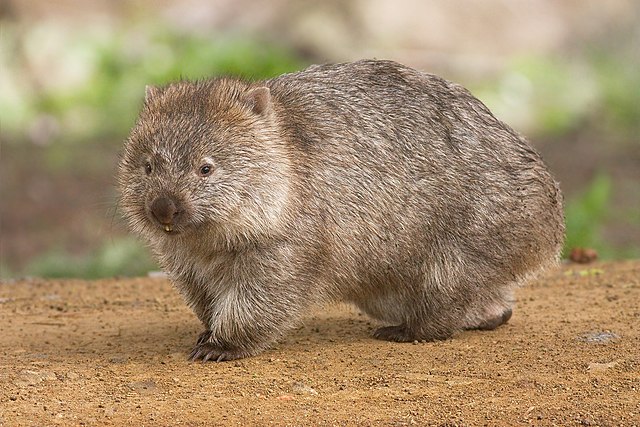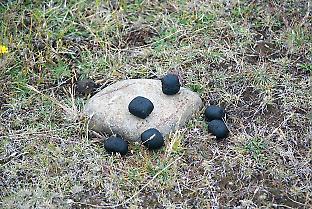 The wombat, a short and stubby marsupial native to Australia, has long puzzled the scientific world for a striking reason: the mystery of its cube-shaped poop!
The wombat, a short and stubby marsupial native to Australia, has long puzzled the scientific world for a striking reason: the mystery of its cube-shaped poop!
Because of their lifestyle of burrowing and chewing, wombats are considered nuisances to ranchers and farmers. But their poop has captured the curiosity of many a biologist.
Patricia Yang was one such scientist who along with researchers at Georgia Tech and the University of Tasmania has been studying these fascinating animals. Check out some fascinating facts about wombats in the Side Notes.
The Secret To The Shape
 Yang and the team suspected that the key to this mystery could be found in the wombat intestines.
Yang and the team suspected that the key to this mystery could be found in the wombat intestines.
Back in 2018, the dissection of a wombat intestine had revealed the clear progression of the feces from a slurry substance to six-sided cubes. This confirmed their theory that wombat intestines, and not anuses, were shaping the cubes.
To investigate further, the team inserted a balloon in the intestine. As they inflated the balloon, the researchers noticed that sections of the intestine had varying degrees of thickness and stiffness and exerted different levels of pressure. These findings went on to win the 2019 Ig Nobel Physics Prize, and laid the basis for the team’s most recent study.
Expanding on previous results, the team later found that the stiffer parts of wombat intestines contracted harder and faster while softer parts contracted more slowly, shaping the distinctive cube corners. In fact, a CT of a live wombat revealed that the cubical shapes are formed in the last 17% of wombat intestines.
The texture of wombat poop is also key to its unique shape. The wombat digestive process is up to four times longer than that of humans, allowing it to extract as much water and nutrients as possible. This means that wombat poop is much drier, and thus more likely to hold its shape.
Lessons From The Study

Indeed, wombats produce up to 100 cubes a day and are often observed arranging them on rocks around their dens to discourage others from trespassing. And of course, cube-shaped poop is less likely to roll off slopes than cylindrical poop, enabling them to mark the boundaries effectively.
Besides solving the long-standing mystery, the team’s study also holds zoological and medical applications. Wombats living in captivity usually produce less geometrically-perfect poops. So understanding wombat digestion could aid in tweaking their environmental conditions at zoos.
The study’s findings could be used by engineers in manufacturing cube-shaped products. And with additional research, corners on human feces might expedite diagnoses of colon cancer, where stiffening intestines are an early symptom.
Sources: BBC, LiveScience, National Geographic, Britannica, Guardian, Slate, ScienceMag







